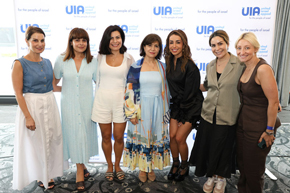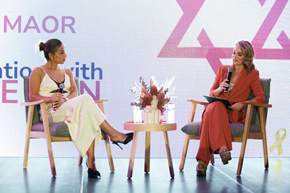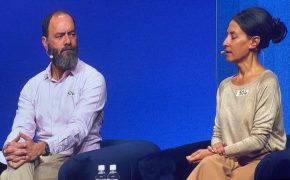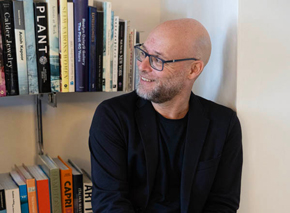From Australia’s Jewish past
Erwin Fabian – one of Australia’s most significant sculptors

Erwin Fabian
Erwin was born on 5 November 1915 in Berlin. His Polish father, Max was a painter and cinematographer. Erwin studied drawing at the School of Art and Craft in Berlin. With racial tension mounting in Europe in 1938, Erwin fled to London, taking art classes at night at London Polytechnic and spending his days at the Victoria and Albert Museum library, teaching himself about art.
With the outbreak of the Second World War, Erwin was interned as an ‘enemy alien’ then deported to Australia on the Dunera in 1940 and interned again at camps in Hay, Orange, and Tatura. On his release in 1942, he served with the Australian army until the war’s end and was mobilised in 1946. For part of his time in the army, he worked in the education unit where his skills as an artist were employed in designing covers and executing illustrations for publications. In 1949 he moved back to London where he worked during the 1950s as a graphic designer as well as teaching graphic design at the London School of Printing and Graphic Arts. He returned to Australia in 1962.
Until this time Erwin had worked primarily with works on paper, particularly monotype prints. In 1962 he began to make free-formed metal sculpture from scrap metal and held his first solo exhibition in 1965 at the Hungry Horse Gallery in Sydney. As well as large monotypes, he showed assemblages he had made using wood and scrap metal collected in the bush outside Melbourne.
He wrote, ‘I got onto working with scrap because it’s what I found in the bush or at scrap yards or from a timber mill. I didn’t start with a nice clean piece of marble or steel. I started with something which I’d found attractive looking. Trying to produce something or make use of these things because they were there, I find that fascinating,’ he said in 2015 in an interview for the Art Gallery of NSW archive. When creating his work, he would draw from a large scrap pile that he had been collecting since the 1970s, many of the pieces showing signs of rust and age. He would say ‘You pick things up that you think might come in handy. I … hardly ever pick up things and think, “I’m going to use that in this way”.’
He produced mainly works on paper until the 1960s and in 1965 he held his first exhibition of sculpture at the Hungry Horse Gallery in Sydney. He re-formed, assembled, and fused discarded fragments of industrial and farm machinery, producing objects in the spirit of abstract expressionism. Since the 1960s Erwin continued to refine his sculpture and, whilst he worked mainly in Australia, he always maintained a strong connection with Europe.
Some of the pieces created for an exhibition with the Robin Gibson Gallery exceeded two metres. Others were designed as miniature table sculptures. What was common in his sculptures was his remarkable ability to transform pieces of scrap metal into meaningful sculptural forms that had a huge presence, a distinct identity and which spoke of a new natural order.
Between 1977 and 1979 he designed and produced a steel sculpture known as ‘Enclosure’ which remains as part of the Art Gallery of New South Wales collection. In later years he experimented with using discarded plastic to shape his forms, then cast them in steel or bronze.
In 2000 and 2001 the importance of his, and his father’s work was recognised in a retrospective exhibition Max und Erwin Fabian: Berlin-London-Melbourne, which was held at the Stadtmuseum in Berlin. Erwin now very elderly continued to work into the twenty-first century still producing and exhibiting. He has become known as the elder statesman of Australian sculpture as well as for his abstract pieces created from scrap metal, but his legacy now also includes paintings, drawings, and prints.
Erwin’s works are held in galleries and museums in Australia and overseas, including in the British Museum. He passed away on 19 January 1920 in Melbourne at 104. His sculptures evolved from the material itself and he considered his drawing – often figurative – an independent practice. He exhibited for close to half a century and his work continued to grow in intensity, refinement, and distilled beauty. He had that rare ability in being able to create a new and convincing reality through which the viewer could be seduced, enchanted and captivated. Although his sculptures were non-figurative and did not imitate anything representational in the seen world, in the final analysis, his sculptural creations do belong to the grand tradition of humanist sculpture. In other words, they interact on a human and emotive level and one would come to believe in their existence not only as aesthetic objects but as metaphors for the human spirit.
Whilst the stories published are of Australian Jews who made their mark in Australia’s early years, given the significance of the Dunera Boys, the New South Wales State Library currently has an exhibition until early May titled ‘Dunera – Stories of Internment’ where many of the internees’ stories and artwork is displayed.
The AJHS acknowledges the following references in the preparation of this story:
New South Wales State Library; Art Gallery of New South Wales; Robin Gibson Gallery; Dunera Stories; Sydney Morning Herald (6 Nov 2015); Erwin’s Century – interview by JNA Wendt for SBS.

The Australian Jewish Historical Society is the keeper of archives from the arrival of the First Fleet in 1788 right up to today. Whether you are searching for an academic resource, an event, a picture or an article, AJHS can help you find that piece of historical material. The AJHS welcomes your contributions to the archives. If you are a descendant of someone of interest with a story to tell, or you have memorabilia that might be of significance for the archives, please make contact via www.ajhs.com.au or stories@ajhs.com.au.







